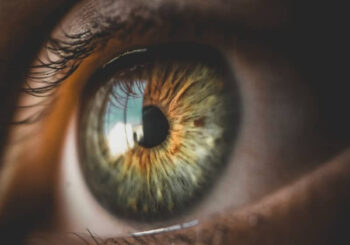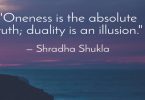Guest writer for Wake Up World
Self-observation seems pretty basic and even a little mediocre or like some pedestrian psychological technique on the surface.
But in my many years of exploring and walking the inner path, I’ve found that self-observation is THE most crucial practice, skill, and undertaking EVER. Full stop. Period. Fini!
At the time of writing, this might not be common knowledge, but there are actually two levels to self-observation – the latter being largely unknown to most people.
(I know this may sound odd, but it’s at the crux of most spiritual and religious paths; it’s just put in different ways: the kingdom of heaven, Self-realization, moksha, anatta, oneness, etc.).
Firstly, let’s get the basic definition out of the way:
What is Self-Observation?
Self-observation is the practice of witnessing one’s thoughts, feelings, beliefs, habits, and behaviors and watching how they impact one’s life.
On a deeper level, self-observation is about observing the nature of the self, also known as the ego or personal identity, to search for where, when, and how it arises and whether it truly exists outside of thought.
Self-observation can be passive or active and is often experienced through practices such as meditation, psychotherapy, and journaling.
Level 1 – How to Practice Self-Observation
In the first level, self-observation is purely a self-help practice to gain more psychological self-awareness.
The benefits of practicing self-observation at this level are many: more inner awareness, the ability to make wiser decisions, understanding of how one’s mind operates, the ability to find and resolve negative core beliefs and core wounds, access to deeper mental/emotional healing, enhanced clarity, more self-compassion, improved relationships, and so on.
Here are two common ways to practice self-observation through both meditation and journaling:
Self-Observation Meditation
- Finding a quiet place and closing your eyes (or leaving them slightly open), notice your breath wherever it presents most strongly in your body. Feel your connection to the earth beneath your feet, legs, or posterior.
- Turn your attention onto what goes through your mind. What thoughts, feelings, memories, and so forth pop into awareness?
- Simply note the inner phenomena without changing, interacting with, or trying to get rid of them. Just let it be there, exactly as it is, without judgment. Just observe whatever goes on within.
- Keep observing whatever comes up, and if you get lost in the stream of thoughts, just notice that when possible and return to observing your inner world.
- That’s it!
Self-Observation Journaling
Here are some self-observation prompts you can use in your journal:
- What am I feeling right now?
- What am I thinking right now?
- What belief is behind this feeling or thought?
- When did that feeling/desire/thought/habit arise within me?
- If I was to describe my inner landscape right now, what would it look or feel like?
- If I was in any inner season, would I be in summer, autumn, winter, or spring?
- What cognitive distortions have I been experiencing recently?
- What inner archetypes or parts of me are active right now?
Choose one or two questions and go for it!
You can also find a bigger list of 100+ prompts in my journaling ideas article.
Level 2 – How to Practice Self-Observation (i.e., Observe the ‘Self’)
Self-observation is the first step of inner unfolding.
– Amit Ray
(Please note: if you’re mentally or emotionally unstable, it’s best to stick to level 1 self-observation, as level 2 may feel destabilizing. Proceed only if you’re fairly internally balanced.)
The desire to find freedom from suffering, inner peace, and truth is at the core of many spiritual and religious traditions. The simple practice of observing the self (aka., self-observation) and trying to find whether it actually exists or not is deeply powerful and paradigm-shifting, but in a very simple way.
[pro_ad_display_adzone id=”110030″]
As a practice that is often dramatized and mystified, self-observation, as described in the book Gateless Gatecrashers, is actually quite basic, direct, and down-to-earth.
Those who persist with self-observation often experience a subtle shift in consciousness, realizing from a place of direct experience that there actually is no solid “me” – it is, instead, seen to be a thought and unquestioned core belief that we’ve been conditioned to adopt automatically since childhood.
And it’s at the root of our suffering.
In the words of Ilona Ciunaite and Elena Nezhinsky in their book Gateless Gatecrashers,
There is a simple, obvious truth: there is no such entity as “me”. There is no self at all, as in zero. There is only life flowing freely as one reality. Life just is. It is so simple that we miss it. We don’t stop to look at what’s always happening. Because of this omission, each person in this world is born into a prison, and spends their entire life feeding, protecting and trying to build and redeem something that was never there to begin with. This is the engine of all human chaos. Seeing through this illusion takes seconds—if you’re honest, and you know where to look.
Although I don’t share the same degree of realization as Ilona and Elena do at this moment, here are some pointers that I’ve found to be helpful:
Self-Observation Pointers
- Where do thoughts come from? Do you control them? (And if you think you do, think of a fruit, or a country, or an alphabetical letter – do it! – then ask the question again. Do you actually control thoughts?)
- Where do feelings come from? Do you control them?
- Where do sounds come from? Do you control them?
- Where do sensations come from? Do you control them?
- Does the wind decide when to blow? Does a bird decide when to chirp? Does a tree decide when to move? Is there any ownership there?
- Gaze at something in your room. Be aware of the thought label associated with it (e.g., “wall,” “chair”). Then drop the thought label and look directly, without a mental story or label, with your senses. Notice the difference between seeing through a thought story and seeing through direct experience.
- Look inside for your sense of inner ‘me,’ where is it? Can you find it?
- When there are no thoughts about ‘you,’ where are you?
- Can ‘you’ exist outside of a thought?
You can find more pointers in Gateless Gatecrashers and the book Liberation Unleashed: A Guide to Breaking Free from the Illusion of a Separate Self by Ilona Ciunaite.
Self-Observation Books
Some other books that can help you to go more into depth on the topic of self-observation are the following:
- Spiritual Enlightenment, the Damnedest Thing by Jed Mckenna
- Waking Up: A Guide to Spirituality Without Religion by Sam Harris
- The Transparency of Things by Rupert Spira
- Nothing to Grasp by Joan Tollifison
- Essence Revisited by Darryl Bailey
- I Am That by Nisargadatta Maharaj
- Living Realization: A Simple, Plain-English Guide to Non-Duality by Scott Kiloby
- Falling into Grace by Adyashanti
- The Direct Path by Greg Goode
- The Power of Now by Eckhart Tolle
- Presence-Awareness: Just This and Nothing Else by Sailor Bob Adamson
- Stop Fixing Yourself: Wake Up, All Is Well by Anthony De Mello
And there are many others. But here I want to point out that you don’t need to buy all of these books or go on a book-reading rampage. Just choose one that sounds good, and stick with it.
You can also read some of my other articles related to self-observation, such as my guide on self-inquiry and non-duality.
***
As we’ve seen, there are two different levels of self-observation. Regardless of where you find yourself, observing your inner world is not just an important but a crucial element of living a full and awakened life. And ultimately, we realize through self-observation that life is just living itself without any ownership.
As yoga master and teacher Swami Kripalu once said,
The highest spiritual practice is self-observation without judgment.
Indeed, self-observation is perhaps the most vital tool in our spiritual, emotional, and psychological toolkit, for without it, we can’t perceive the truth directly from our own experience.
I’m curious about your experience with some of the questions and pointers in this guide. What came up for you? I’d love to hear your comments below.
About the author:
Aletheia Luna is a prolific psychospiritual writer, author, and spiritual mentor whose work has touched the lives of millions worldwide. As a survivor of fundamentalist religious abuse, her mission is to help others find love, strength, and inner light in even the darkest places. She is the author of hundreds of popular articles, as well as numerous books and journals on the topics of Self-Love, Spiritual Awakening, and more. See more of her work at lonerwolf.com.
This article, How to Practice Self-Observation (Prompts and Meditation), was originally published on lonerwolf.com, reproduced with permission.
Discover the transformative power of sound healing in this free online video event with master sound healer Bodhi Starwater. With over 40 years of experience, Bodhi will guide you in creating your own sound healing journeys using the five elements—fire, water, earth, air, and ether.
During this event, you’ll learn how to:
- Establish a sacred healing space
- Align sound healing with the five elements
- Harness breath and silence for deeper healing
- Infuse any instrument with the healing power of sound
Bodhi will also perform a live sonic ceremony, demonstrating how sound can bring peace and balance to your life. Whether new to sound healing or looking to expand your practice, this is a unique chance to learn directly from a leading expert.
RSVP today to join this free event and start your sound healing journey!
If you’ve found value in our articles, we invite you to support the release of our brand-new book, “Gratitude Practices for Kids: A Practical Guide for Adults to Instill a Spirit of Appreciation and Positivity in the Next Generation.“
“Gratitude Practices for Kids” brings together over 25 innovative and accessible practices designed to enhance gratitude in everyday life. This comprehensive guide is backed by 17 scientific studies, ensuring each concept is grounded in research, underscoring our commitment to nurturing growth, emotional intelligence, and positive interactions between adults and children.
We encourage you to opt for the paperback version to celebrate this new release. Dive into its fresh pages away from digital distractions, allowing you to immerse yourself in the transformative practices it offers.
Over recent years, Wake Up World has faced significant online censorship, which has impacted our financial ability to operate. Moving into book publishing represents a strategic step to secure the ongoing funds needed to continue our mission. By purchasing Gratitude for Kids, you help us keep our content free and accessible to everyone, avoiding needing a paywall. With over 8,500 articles published in the last 13 years, we remain dedicated to keeping our valuable content open to all.










